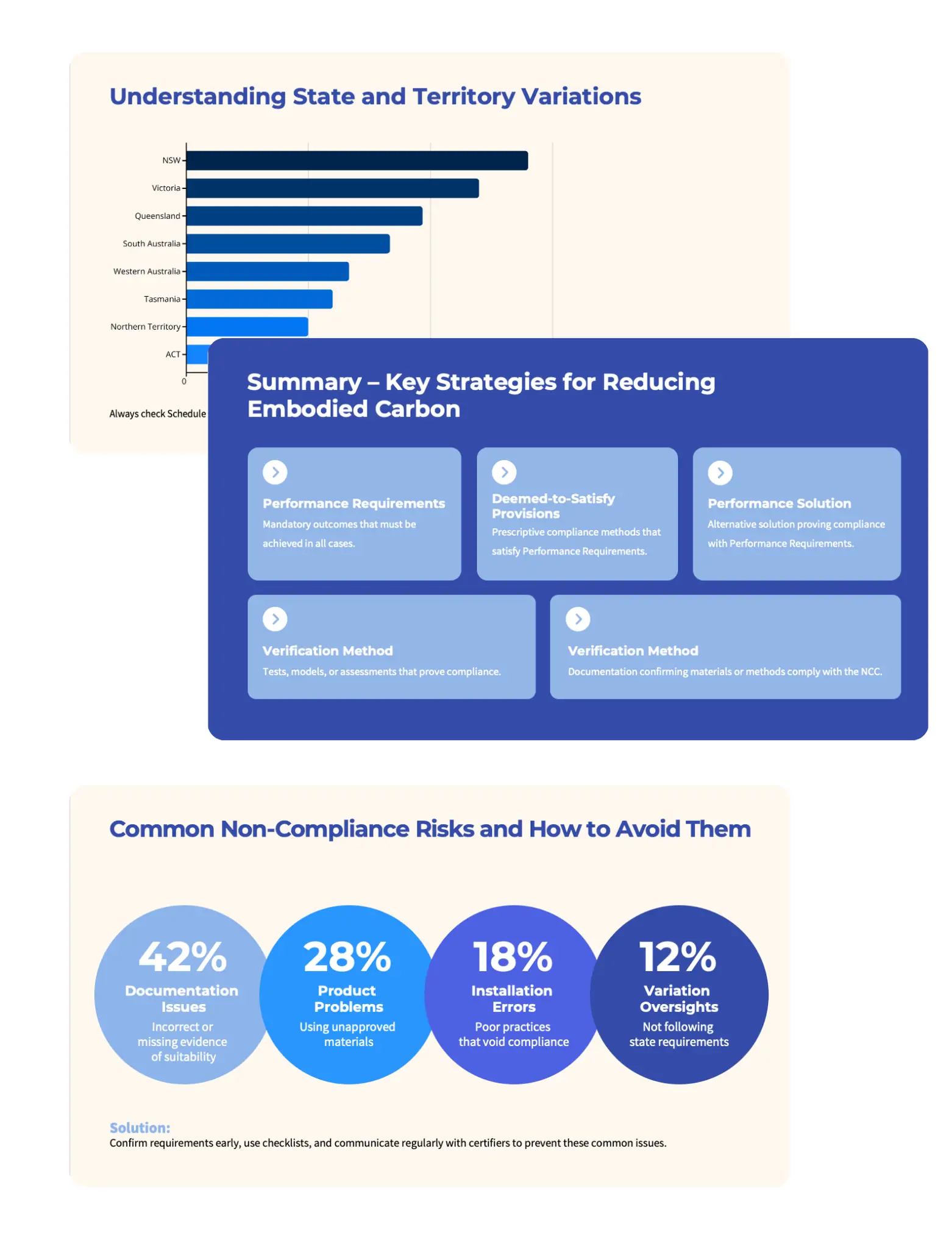Course Content
★★★★★
This formal CPD course is a beginner-level CPD training session designed for builders, tradies, designers, and certifiers. It provides a practical and accessible overview of the NCC, covering its structure, purpose, and how to navigate its clauses for day-to-day compliance. The course explains key building classifications, compliance pathways (Deemed-to-Satisfy vs. Performance Solutions), and how to apply NCC principles on-site using proper documentation and evidence of suitability. Real-world examples, state/territory variations, and tools from the ABCB website are included to help participants apply their learning immediately. The course concludes with a CPD quiz to reinforce understanding and award formal CPD points.

This session is designed for

Builders

Certifiers

Building Designers

Tradies

Building Surveyors
By the end of this course, participants will understand the structure and purpose of the National Construction Code (NCC) and how to navigate its volumes and clauses effectively. They will be able to identify key compliance requirements based on building classifications and apply appropriate compliance pathways, including Deemed-to-Satisfy and Performance Solutions. Additionally, they will gain practical skills in applying NCC principles on-site, including using evidence of suitability and working collaboratively with certifiers to ensure legal and quality outcomes.
This ensures that CPD efforts align with professional regulatory requirements.
What’s Included
This course provides a clear and practical introduction to the National Construction Code (NCC) tailored for builders, tradies, designers, and certifiers. It breaks down the structure of the NCC, explaining how to navigate its volumes, clauses, and compliance pathways. Participants receive guidance on building classifications and how to apply the correct standards for each class. The course also offers real-world insights into documentation, evidence of suitability, and avoiding common non-compliance risks. Additionally, it includes access to CPD accreditation through a quiz, along with tools, checklists, and resources to support continued professional development.

Why Take This CPD Session?

Gain a clear understanding of the NCC’s structure, compliance pathways, and building classifications to avoid costly mistakes, project delays, or non-compliance issues.

Learn how to navigate the Code, provide the right evidence of suitability, and communicate effectively with certifiers, improving the speed and success of approvals.

Apply practical compliance principles on-site and at the design stage to ensure your projects meet legal standards, enhance safety, and build trust with clients and stakeholders.
Professional development is an investment in career growth and regulatory compliance. Take the next step today.